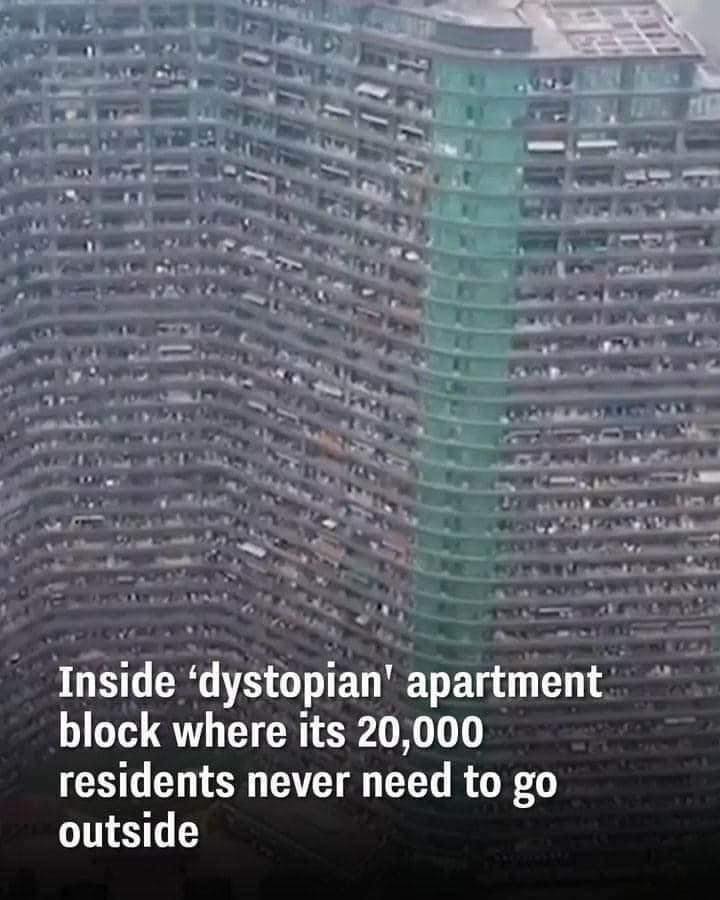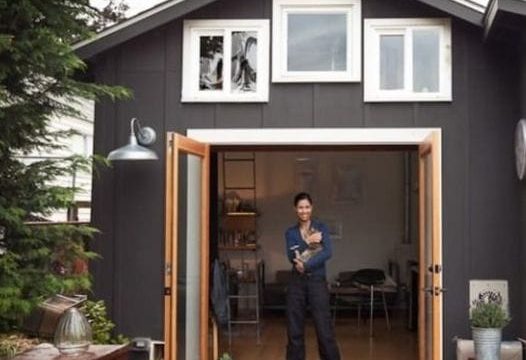In early 2024, a viral TikTok video featured an enormous building in China dubbed the “Dystopian Apartment.” Captured by drone, the video revealed the sheer size and design of this structure, designed to house up to 30,000 residents. Posted by @fatheristheone, the video left viewers stunned by its massive capacity and unique features.

For those familiar with dystopian novels, these stories often depict societies that are repressive or dehumanizing. While they’re typically fiction, they also serve as cautionary tales. Interestingly, China now has an apartment complex that seems straight out of one of these novels: the Regent International, capable of accommodating tens of thousands of residents while offering every modern amenity.
Features of the ‘Dystopian’ Apartment
Located in Qianjiang Century City, Hangzhou, Regent International was designed by Alicia Loo, who also designed the Singapore Sands Hotel. Completed in 2013, the building stands 675 feet tall and can accommodate approximately 20,000 people. It boasts an S-shaped design with 36 to 39 floors, depending on the side, making it one of the most densely populated structures in the world.
The building’s interiors are packed with amenities, making it possible for residents to access everything they need without stepping outside. It includes over 30 floors featuring restaurants, pools, nail salons, grocery stores, and even internet cafes. In this sense, Regent International is more like a small city than an apartment building, where everything from daily essentials to recreational facilities is available under one roof.
The Appeal of Convenience
The convenience of Regent International draws many young professionals, influencers, and college students. Its affordability is another major selling point, with units ranging from 1,500 RMB (about $200) to 4,000 RMB (under $600) per month. With everything in one place, many residents may rarely need to leave, raising concerns about limited access to fresh air and sunlight. However, living in this “dystopian” building is entirely voluntary, and for many, the advantages of cost-effectiveness and convenience outweigh potential drawbacks.
A New Kind of Living
Living in Regent International provides unparalleled convenience, especially for busy urban professionals. Despite the building’s reputation as “dystopian,” some view it as an innovative approach to sustainable living. The building has even been described as “the most sustainable living building on earth,” as it maximizes housing capacity without sprawling outward.
Given the ongoing housing crisis in the U.S., similar developments could offer a potential solution. The concept of compact, high-capacity living spaces has already been tested in places like Whittier, Alaska, where a 14-story building houses all 272 residents, offering amenities like a church, school, and post office. While Whittier’s building operates on a smaller scale than Regent International, the idea remains the same: providing everything a community needs in one structure.
The Downsides of Density
While the convenience of such apartments is evident, there are some clear disadvantages. Americans, for example, tend to value privacy, personal space, and access to the outdoors—features that are limited in a dense apartment complex like Regent International. Many people enjoy having a yard to relax in or space for pets to roam. Additionally, having so many people living together under one roof can be overwhelming and may limit personal space and outdoor access.
However, some residents mitigate these challenges by opting for larger units with balconies, which offer more space and fresh air. Additionally, residents can take walks around the neighborhood to enjoy a change of scenery.
Could You Live in a ‘Dystopian’ Apartment?
So, would you consider living in a place like Regent International? Its compact, efficient design may not be everyone’s cup of tea, but it offers an intriguing glimpse into the future of urban living. With all its amenities and cost-effective lifestyle, it certainly has its appeal, despite its drawbacks. Share your thoughts! Is this the kind of living arrangement you’d embrace, or do you prefer a more traditional home setup? Let us know in the comments!





